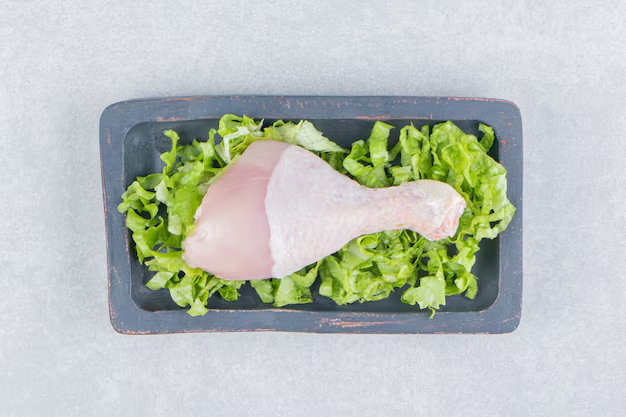How Long Can You Keep a Thawed Turkey in the Refrigerator?
As the holiday season approaches, thoughts of savory, golden-browned turkeys often come to mind. But before we can relish in this culinary delight, there’s an important question to tackle: How long is a thawed turkey good in the refrigerator? Understanding proper storage is vital to maintaining food safety and ensuring that your holiday meals are as enjoyable as they are delicious. Let’s dive into everything you need to know about storing your turkey safely.
🦃 Thawing Your Turkey: Methods and Best Practices
The Importance of Proper Thawing
Before we address storage, let’s talk about thawing. Proper thawing not only preserves taste and texture but is crucial for preventing bacterial growth. It's essential to handle this process with care to keep your family safe and enjoy a perfectly cooked turkey.
Three Safe Thawing Methods
Refrigerator Thawing: This method is the safest and simplest. Place the turkey in its original packaging in a shallow pan or tray to catch any drips. Allow approximately 24 hours for every 4-5 pounds. Plan ahead to ensure your bird is ready for the oven.
Cold Water Thawing: Speed up the process by submerging the turkey in cold water. Be sure to change the water every 30 minutes to keep it cold. This method takes about 30 minutes per pound. Remember to plan accordingly to cook immediately once thawed.
Microwave Thawing: Though less common, a microwave can be used if your turkey fits. Follow your microwave’s manual for settings. Like cold water thawing, a microwave-thawed bird should be cooked immediately.
Tips for Effortless Thawing
- Plan Ahead: A large turkey can take several days to thaw in the fridge, so account for this in your schedule.
- Keep it Wrapped: This prevents contamination from any bacteria present.
- Don’t Leave It Out: Never defrost a turkey on the counter as this can promote bacterial growth.
🧊 Refrigeration: How Long is Safe?
Post-Thaw Guidelines
Once your turkey is thawed, it’s safe to keep it in the refrigerator for 1 to 2 days. This timeframe is crucial in preserving both the flavor and safety of your turkey. If it sits too long, the risk of spoilage increases, leading to potential foodborne illnesses.
Recognizing Spoiled Turkey
Knowing the signs of a spoiled turkey can prevent a culinary catastrophe. Here are a few indicators that it’s time to discard:
- Unpleasant Odor: A sour or off smell is a key indicator.
- Slimy Texture: If the surface of the turkey feels sticky or slimy.
- Discoloration: An unusual change in color, such as gray or yellow hues.
🕒 Maximizing Freshness: Storing Thawed Turkey
Prioritize the Fridge
Store your thawed turkey in the coldest part of the refrigerator. This section will maintain a consistent temperature to slow down bacterial growth. Keep it well wrapped to prevent cross-contamination with other foods.
Use a Meat Thermometer
When it’s time to cook, use a meat thermometer to ensure that the turkey reaches an internal temperature of 165°F (74°C), which is considered safe for consumption. This temperature guarantees that harmful bacteria have been eliminated.
❄️ Freezing: Extending Your Turkey’s Life
What If Plans Change?
If your plans change and you need to store the turkey beyond the 1-2 days post-thaw, you can refreeze it. Ensure the turkey is tightly wrapped in airtight packaging or freezer bags to prevent freezer burn.
Considerations for Refreezing
- Quality May Suffer: While it is safe to refreeze, the texture may be slightly affected.
- Use the Right Materials: Consider vacuum sealing to extend freshness.
🛡️ Food Safety: More Than Just Taste
The Dangers of Improper Storage
Improper food storage can lead to potential health risks. Understanding and implementing safe practices minimizes these dangers and ensures your family enjoys a memorable (and safe) meal.
Cross-Contamination Control
Take steps to prevent any cross-contamination by:
- Cleaning and Sanitizing: Disinfect any surfaces and utensils that come into contact with raw turkey.
- Dedicated Utensils: Use separate cutting boards and knives for raw poultry to prevent cross-contamination.
🗓️ Planning Your Holiday Meal: A Timing Guide
Timeline for Success
A well-thought-out timeline ensures that everything proceeds smoothly:
- 3-4 Days Before: Begin thawing in the refrigerator.
- 1-2 Days Before: Check for complete thawing and prepare final recipes.
- Day Of: Ensure proper cooking and use a thermometer for food safety.
Easy-to-Follow Checklist
Here’s a handy checklist to keep you on track:
- ✅ Plan Thawing: Start the thawing process early.
- ✅ Check Temperature: Ensure your fridge is at or below 40°F (4°C).
- ✅ Review Recipes: Double-check your cooking instructions and timelines.
- ✅ Prepare Safely: Use dedicated tools and clean surfaces regularly.
Summary Table: Safely Handling Your Thawed Turkey
| Step | Action |
|---|---|
| Thawing Method | Opt for refrigerator thawing; plan 24 hrs per 4-5 lbs. |
| Post-thaw Storage | Keep in fridge for 1-2 days max; store in the coldest part. |
| Cooking Precaution | Always confirm an internal temperature of 165°F (74°C). |
| Refreezing | Repackage tightly if refreezing; expect possible texture impact. |
| Spoilage Signs | Watch for bad odors, slimy feel, or discoloration. |
| Cross-contamination | Use separate cookware for raw poultry and clean surfaces consistently. |
Final Thoughts on Thawed Turkey Storage
Safeguard your holiday feast with proper planning from start to finish. Take the time to understand the ideal methods for thawing and storing your turkey. With these tips and practices, you’ll be well-equipped to ensure your turkey is both safe and delicious, bringing joy to each person at your table.
Remember, practice makes perfect, and by following food safety protocols, you’re not just cooking a meal—you’re creating cherished holiday memories. Happy cooking, and enjoy your meal!
